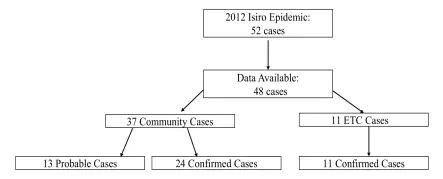
Abstract
We describe two approaches to modeling data from a small to moderate-sized epidemic outbreak. The first approach is?based on a branching process approximation and direct analysis of the transmission network, whereas the second one is based on a survival model derived from the classical SIR equations with no explicit transmission information. We compare these approaches using data from a 2012 outbreak of Ebola virus disease caused by?Bundibugyo ebolavirus?in city of Isiro, Demo- cratic Republic of the Congo. The branching process model allows for a direct comparison of disease transmission across different environments, such as the general community or the Ebola treatment unit. However, the survival model appears to yield parameter estimates with more accuracy and better precision in some circumstances.